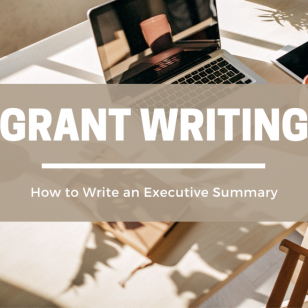By Craig Klose
Contributing Writer
So there you are, reading a grant request for proposals (RFP) before putting pen to paper — or fingers to keyboard, rather. You find yourself having read it several times through and are no closer to understanding it than after the first time. What now? You HAVE to understand and follow the RFP to write the grant proposal effectively, checking all the funder’s boxes, ensuring each question is answered and each piece of supplementary documentation is submitted — in exactly the format requested.
You’ve heard of the Golden Rule of Grant Writing: Follow the RFP. It may seem daunting. Some funders — and not just government funders — have ridiculously lofty standards. In some cases, you must answer many questions (sometimes repeatedly for different reviewers), connect many dots, and provide ample evidence of need and structure behind your grant initiative.
RFPs may be massive documents with directives that put the most incomprehensibly aggravating backyard playground assembly to shame. They’re designed that way for a reason. After all, funders aren’t actually going to give their money away. You have to earn it. (And helpful hint: before spending time and resources laying out a framework and writing the grant, spend some time poking through the funder’s website and IRS 990 filing to see if they’ve funded nonprofit organizations and initiatives like yours in the past. If you’re not a strong fit for their priorities, you won’t be funded.)
So How Do You Follow the RFP in Grant Writing?
Relax! It’s all good! The next step might be to take a break. If you’ve been focusing on a difficult task for a long period of time and still find the material as intractable as at first, step away from it. Taking even little breaks (maybe a brisk walk around your office or around the block) can help clear your head and restart your brain after a stall-out.
Why all the difficulty? Because the grant you are looking at is an extremely complex, extremely competitive grant. Let’s say, for this academic exercise, it’s a huge government grant. Just the application instructions alone are 75 pages long. Daunting? Not to you, because you are a professional with an excellent team behind you!
But where do you start?
Determine Eligibility and Prequalification
First and foremost, your organization must be eligible to receive funding. Eligibility and prequalification requirements identified in the RFP may be more involved than you think and require work to be done even before you begin writing the grant. Generally, organizations must have tax-exempt status — like 501(c)(3) — to be eligible to receive grant funding. However, some grantmakers provide funding to for-profit businesses and institutions, as well.
But it’s not just about eligibility as an organization. Having nonprofit status does not guarantee eligibility for just any grant process. Funders typically have very prescriptive requirements for the types of entity they will fund. Some only consider eligibility for higher-education institutions, while others may fund only health care networks, scientific studies, or specifically religious/non-religious organizations.
Beyond this, the next step often requires getting your house in order, so to speak. Let’s say the funding organization for this exercise is a sub-agency of the New York State Education Department. One eligibility requirement for the grant is that you are all caught up on your final fiscal or narrative reports on any State Ed grants you have in the pipeline. Does this affect your organization? In other eligibility requirements, your organization must have a Records Management Officer (RMO) appointed, and your organization must have an appropriate “records retention and disposition schedule” adopted.
If these three items are all taken care of beforehand, great! But if they are not, it means some advance work for your organization. And more questions:
- Does the RMO have to be a paid position?
- Can it be an existing staff person?
- Is there a certain number of hours they must devote to records management duties per week and, if so, how is this documented?
- And what constitutes an “appropriate” records retention and disposition schedule?
Furthermore, the RFP may state that accomplishing both of these last two records-related items will require an agenda item at a meeting of your Board of Directors. How often does your Board meet? Will a regular meeting do? Or, because of the timetable, will you need to schedule a special Board meeting? You see how the work that is required before you even begin to design your grant project can be substantial and time-consuming?
Learn from the Past
Look at past successful (and unsuccessful) proposals of the same grant, if possible. If you are a grant writing freelancer or consultant, chances are the grant has come up in the past and copies of completed applications should be found in the nonprofit office’s files.
If you are an organization writing the grant for yourself, or for the first time, you might call on colleagues in your field and region who have applied for that grant before. As we’ve said before, many nonprofit colleagues will be more than happy to share past winning grant narratives with you (although they may delete financial or proprietary information).
Now, read a question from the application and the answer given in the borrowed grant.
- How did they interpret the question?
- Did they answer the question directly?
- Did they give too much information, or not enough, or the correct amount?
This comparison should give you ideas and inspiration for how YOU should best answer these questions for YOUR organization. Resist the urge to copy directly from the past grant. Besides the fact that it is simply unethical, it was written for a different project and a different organization.
Follow Formatting and Word/Page Counts Exactly
Now that you’re sitting down to write, let’s look at those damn word and page counts. Grant processes often have mandatory maximum or minimum word/page requirements for the narrative. Even if an RFP doesn’t have these set in stone, they likely have preferences.
In your first read-throughs of the RFP and application instruction, take copious notes. Consider variables like:
- What information do they want here, exactly?
- How in-depth should I go in this question?
- Should I put my agency history in the first question or the sixth question where they ask about agency capacity?
Organize your notes after you’re finished reading the RFP and instructions several times carefully. Work them into as concise a list of questions as possible. Now’s the time to make an initial contact with the funder.
Consult the Source
Who better to answer your questions and clarify fuzzy areas than the funder itself? You may feel as if you’re bothering them, like they would judge or demerit you based on your perceived inability to comprehend their meaning. Put that thought aside, too! Funders are happy for the conversation. In fact, most welcome it. They would rather help you compile the most competitive proposal possible than wade through a poorly constructed narrative that misses their point.
This is an important part of the relationship-building process.
Let’s say, for instance, you are applying for a state grant to help you with municipal records (the one I mentioned earlier with the 75-page application instructions). Somewhere in the fine-ish print on page 4, you discover there is a person with an official-sounding title such as Records Officer (RO). The RFP does not say it in so many words, but this person is extremely important for the grant!
Per the RFP, this regional middleperson will serve as your contact and must be made aware of your intention to apply. They should be kept apprised of your progress throughout. They are your go-to person and should be asked for feedback regularly on things like project design, budget matters and writing of the narrative. The more she is kept in the loop and gains familiarity with your organization and your project, the better. As I said, you are developing a personal relationship here that will serve both of you.
If a funder has no such specific technical assistance staff listed, call and inquire who the best person is to ask a specific question about the grant. You don’t want to waste the funder’s time needlessly but it’s good that they see that you want to get it right. Don’t forget your question about page or word limits. Put it this way; “I see you don’t list an exact page or word limit, but what is a good average length for my narrative?”
Answer Their Questions Exactly as They Ask
Let’s take a closer look at the specific instructions for the grant narrative. The more you read them, the more convinced you were that you are going to have to write not two, three or four, but FIVE, SEPARATE narratives! Is this possible? Yes, it is possible – but don’t panic yet.
We see that there are several different types of grants and several different categories of grants. You need to choose the type of grant (Shared Services, Individual, Disaster Recovery, etc.) and then the category (Inactive Records, Historical Records, Document Conversion and Access etc.). The problem is, the categories seem to overla. Your organization’s records are certainly inactive, they can be described as Historical, and your project involves Document Conversion and Access. So, how do you know which one to choose? Consult the funder’s Records Officer (discussed earlier) whom you have already spoken to. (Remember, you are not bugging them. This is their job.)
So after discussion with the RO, you find that it’s not five separate narratives, but more like three. The first is the Statement of the Problem. It is in this section where applicants list their inactive municipal records to be digitized with grant funds, in great detail. This involves identifying:
- Records series; subcategory of records series
- Date range
- Sheet size
- Number of pages
- Single or double sided
- Bound or loose
- Condition of records
- Retention schedule.
This needs to be done for each partner in the grant – when I worked on a similar grant we had 25 partners. This ended up taking 36 pages of the Statement of the Problem!
Next, the type of grant and the category of grant each had their own discrete narrative questions. But instead of getting caught up worrying about how long your narrative is going to be, or how convoluted the instructions are, just take each section in its turn, methodically answering the question to the best of your ability. And, as always, use members of your team to help you write sections of the grant that correspond with their strengths. If you do work this way, however, make sure that ONE person does a final edit of the grant for narrative flow, cohesion and unity.
Finally, There’s No Right or Wrong Way to Answer a Question
Get this out of your mind right now! Despite the formality, structure and rigamarole, grant processes aren’t seeking right answers. They’re seeking strong answers. They’re seeking answers that show some digging, foresight and planning to solve a well-defined problem toward an even more well-defined goal.
So there’s not necessarily one correct way to answer the question. Your organization could choose to answer a question in a slightly different way that may be just as valid as another. Realizing this should ease your mind a little. It’s not a matter of saying exactly what you feel the funder wants to hear. It’s more a matter of giving all the information that you think the funder needs in order to properly judge your project, within the framework of their questions.
Follow the RFP: Are You Ready for your Next Grant Writing Project?
There’s no shame in asking for help. Southern Tier Communications Strategies, LLC manages clients seeking grant funding by providing grant-writing and research services, as well as guiding the relationship-building process with likely funders. Contact Kelsey Boudin, STCS President and Founder, at ke****@************************es.com for more information.







